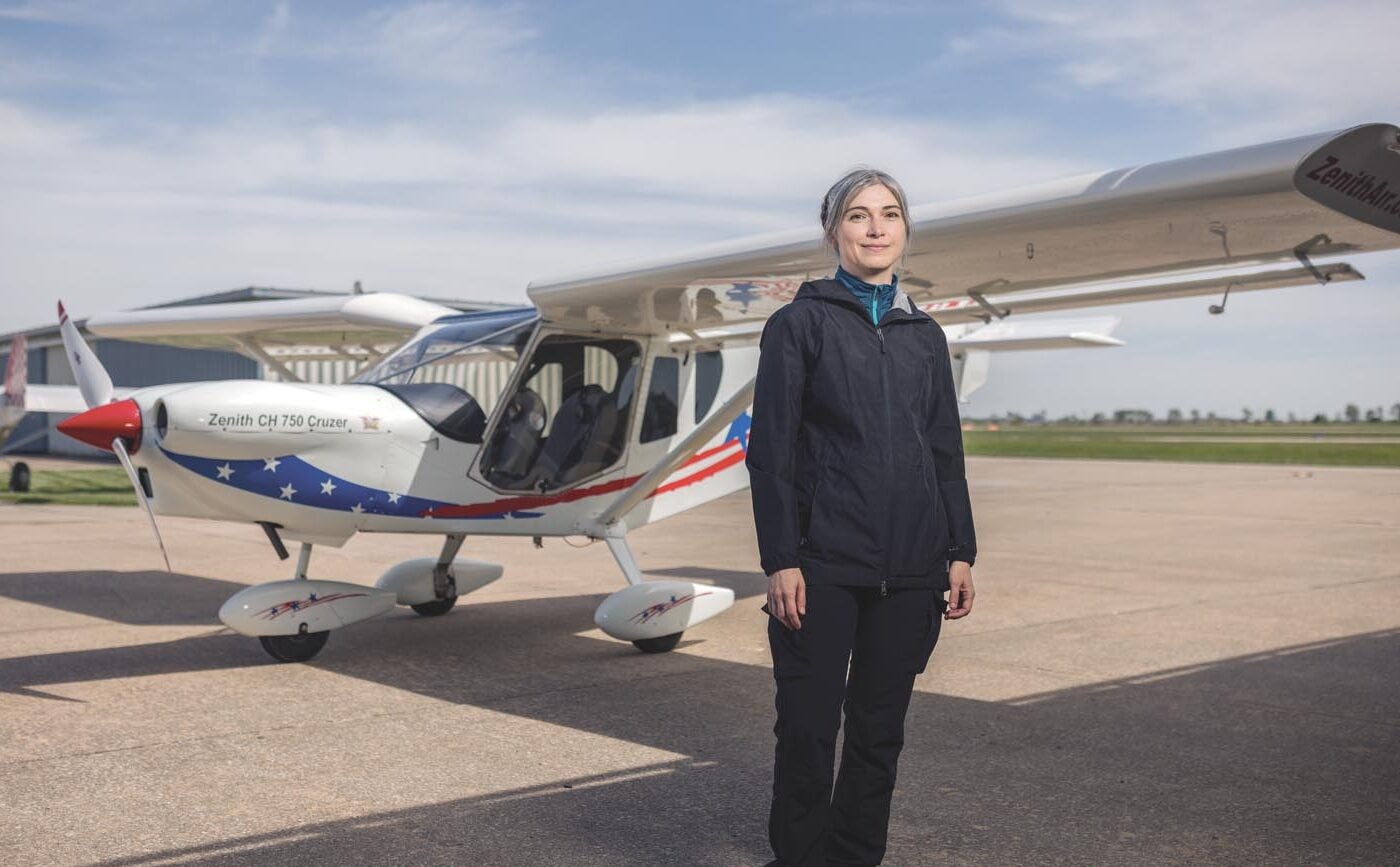 When I started taking flying lessons in earnest a couple of years ago (my first lesson was at 14 but it took a while to have the resources and time I needed to commit), I, like so many other lovers of all things airplane, began shopping for my own bird. I quickly hit two snags: available hangar space and rapidly increasing hull values for even legacy OEM-built craft.
When I started taking flying lessons in earnest a couple of years ago (my first lesson was at 14 but it took a while to have the resources and time I needed to commit), I, like so many other lovers of all things airplane, began shopping for my own bird. I quickly hit two snags: available hangar space and rapidly increasing hull values for even legacy OEM-built craft.
A friend sent me information about Zenith Aircraft, the headquarters of which is practically in my backyard—about an hour’s drive through the cow pastures of mid-Missouri. But, as a newbie pilot, could I comfortably—and safely—transition from a familiar environment to something different? Is it true what the naysayers claim about homebuilts? Are they sketchy?
I was intrigued by the idea of building my own airplane—and as an admirer of STOL flying skills, anything with such promisingly short takeoff and landing distances—but also entirely overwhelmed by the idea of tackling the entire project of building a machine I’d rely on to take me into the air and bring me safely home to terra firma.
My lessons continued and so did my idle online shopping. So did my despair at increasing airplane values. I continued to wonder about kitbuilt options, especially Zenith. I continued wondering what it might be like as a pilot with low hours to transition to one of the company’s aircraft from my instructor’s ugly but trusty 1971 Cessna 172L.
Aside from a few brief lessons with LeRoy Cook in his mustard-yellow 1976 Cessna 150M, I’ve spent most of my left-seat time in Cessna 172s. First, my brother-in-law and sister’s beloved late-70s model, then my regular trainer, and a couple of other versions of the hardy bird when spending time with family in Cody, Wyoming, in the summers. The thought of transitioning to a craft with different handling and performance characteristics makes me hesitant.
Last fall, Zenith CEO Sebastien Heintz invited me out to Zenith for the company’s annual homecoming event. I couldn’t make it due to a death in my family, so instead, I attended one of the company’s many builder workshops and assembled the aluminum rudder for a CH 701.
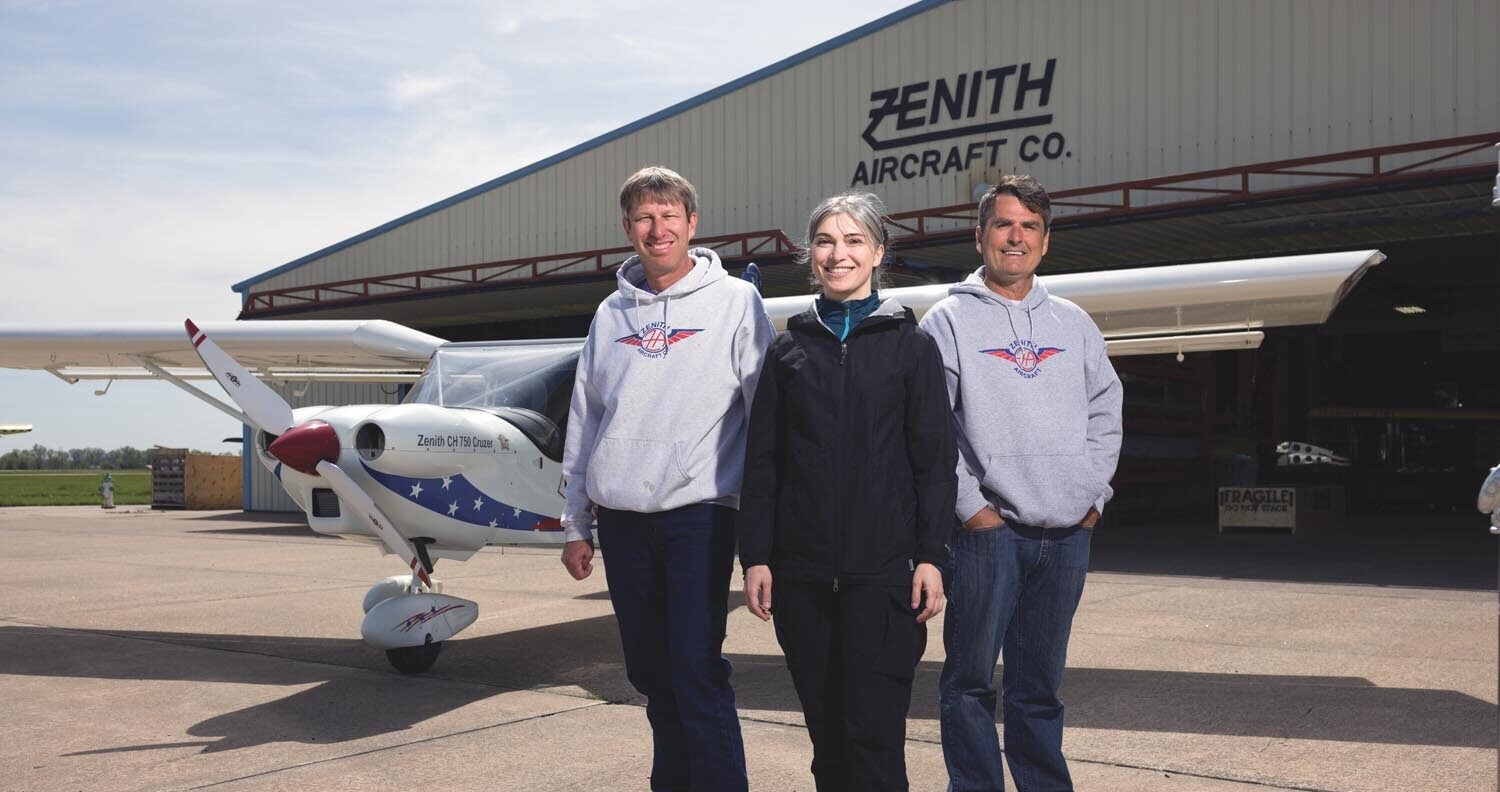
That experience was empowering. After some struggles lining up pieces and sore hands after Clecoing and riveting—and two days of work—I had a working vertical stabilizer. (Because the 701 has an “all flying” rudder, you can argue that it’s both the rudder and the stabilizer.) Oh, and I had the seductive sense that building an airplane might not be so hard or time-consuming after all. Yes, I can hear those of you who have been down the path laughing at me.
But I have continued to mull over the idea. Zenith is close enough that I can pick up pieces in bite-sized projects. I have an empty bay in my garage and a couple of teens who could gain a lot from participating in the work. I don’t know much about engines or have a clue how I’d arrange my instrument panel, but I think the time required to assemble the airframe would allow for a lot of research.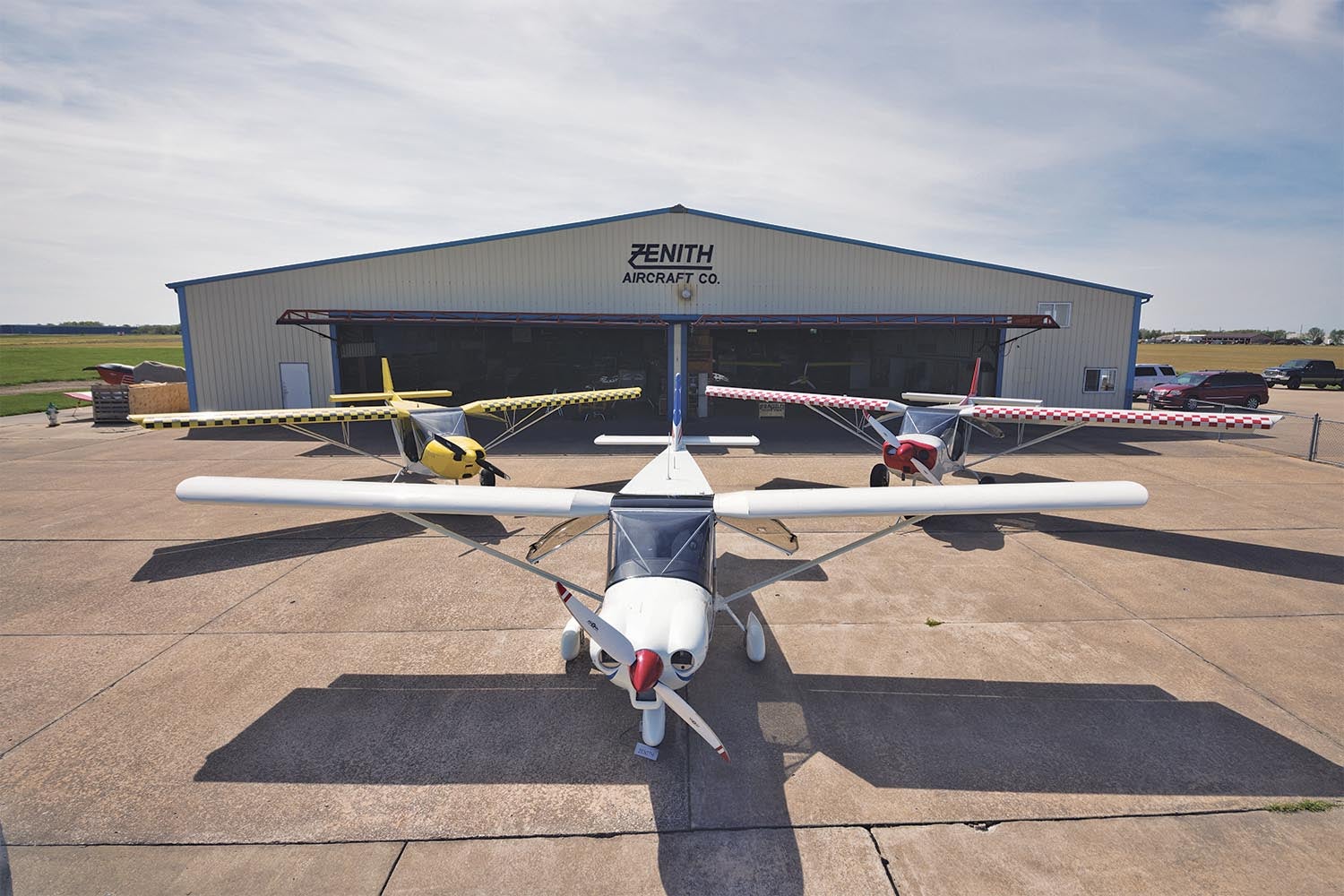
Why Am I Here?
When this magazine’s editor in chief reached out and asked me to fly the Zenith CH 750 to get my take as an inexperienced pilot on how approachable the craft is for a newbie, I jumped at the chance for another trip to Mexico, Missouri, to go up with Roger Dubbert. I’d taken a short demo flight during the workshop in October and my main takeaway at the time was that the airplane felt “squirrelly” to me compared to the 172.
And here’s a good place to pause and note that it’s difficult to make a straight comparison between a Cessna 172 and a CH 750—and also between a Cessna 150 and a two-seat Zenith. When I took my demo flight last fall, I hadn’t yet flown with LeRoy. I’ve since gone up with him twice, once on a bone-rattling windy day not long after the workshop at Zenith (I have never seen a pilot more gleeful to be knocked around in the sky) and a few laps around my home airfield in early February.
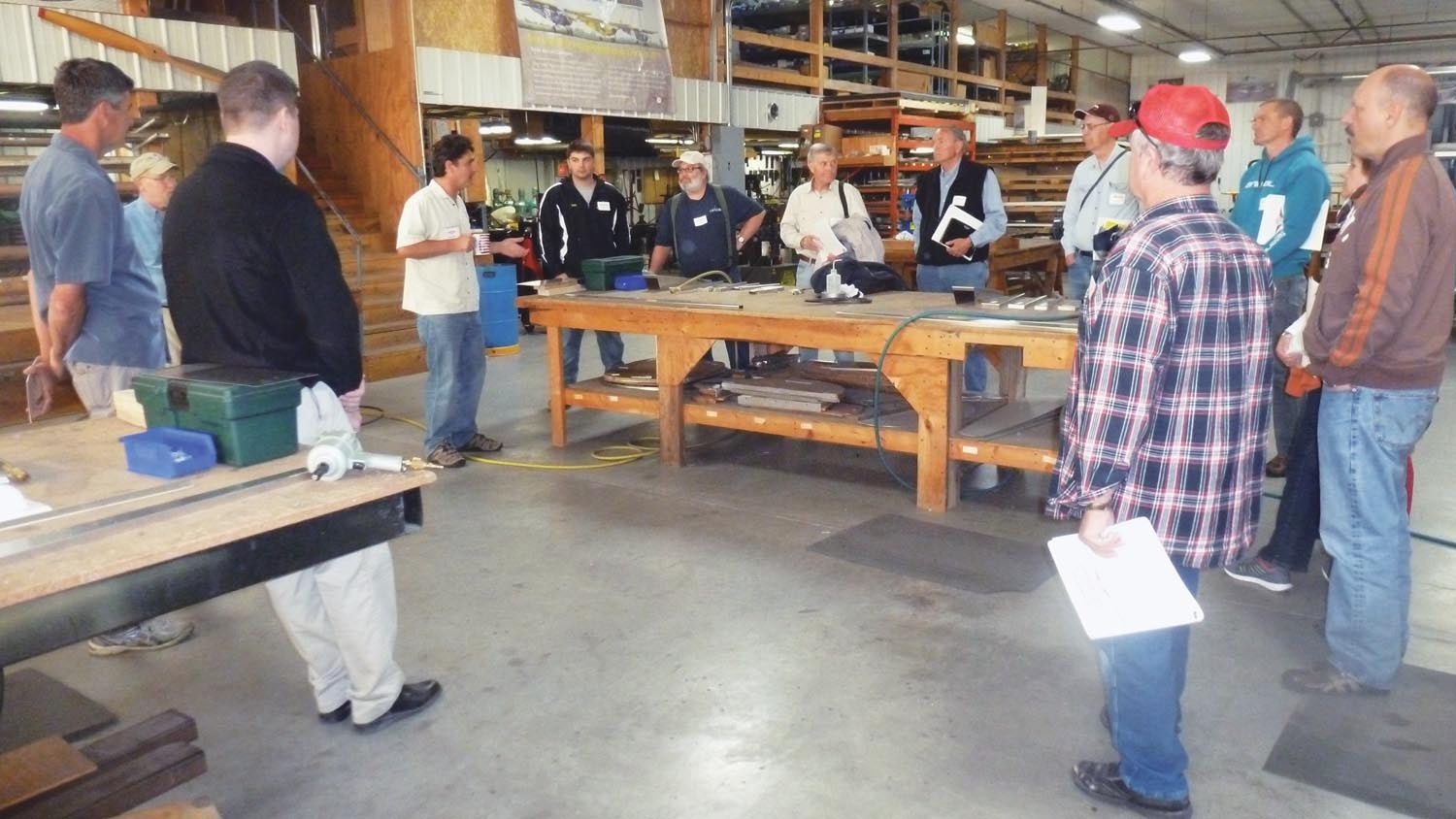
As most of you already know, familiar instrument panel aside, flying a 150 feels different than a 172. The climb rate is sluggish and the climb attitude is uncomfortable for someone used to peeking over the cowl to look for traffic while rocketing into the air (or so it felt when I flew my regular trainer again). And while I sometimes feel like the 172 doesn’t want to come out of the sky on final, the 150 will happily sink to Earth when you reduce power. It practically lands itself.
The CH 750 shares the enthusiastic climb characteristics of the 172 and the aggressive sink rate of the 150. It has no hesitation about leaving the ground—and no qualms about returning. And handling in the air isn’t quite like either of the others. Part of what Marc was asking of me was a sense of how easy (or not) it would be for a student pilot near the end of her training to adapt to the Cruzer. He’s too experienced to notice qualities that might trip up a low-time pilot and, from having flown so many aircraft types, too adaptable. Zenith prides itself on making its airplane accessible, easy to fly. Marc feels they are, but he wanted my newbie opinion. So here we are.
It’s also worth noting that transitions are different for everyone. Some pilots more easily adapt than others. Consider this one data point and, perhaps, one aviator refuting the idea (usually proposed by those who don’t know any better) that homebuilts are for the experienced only.
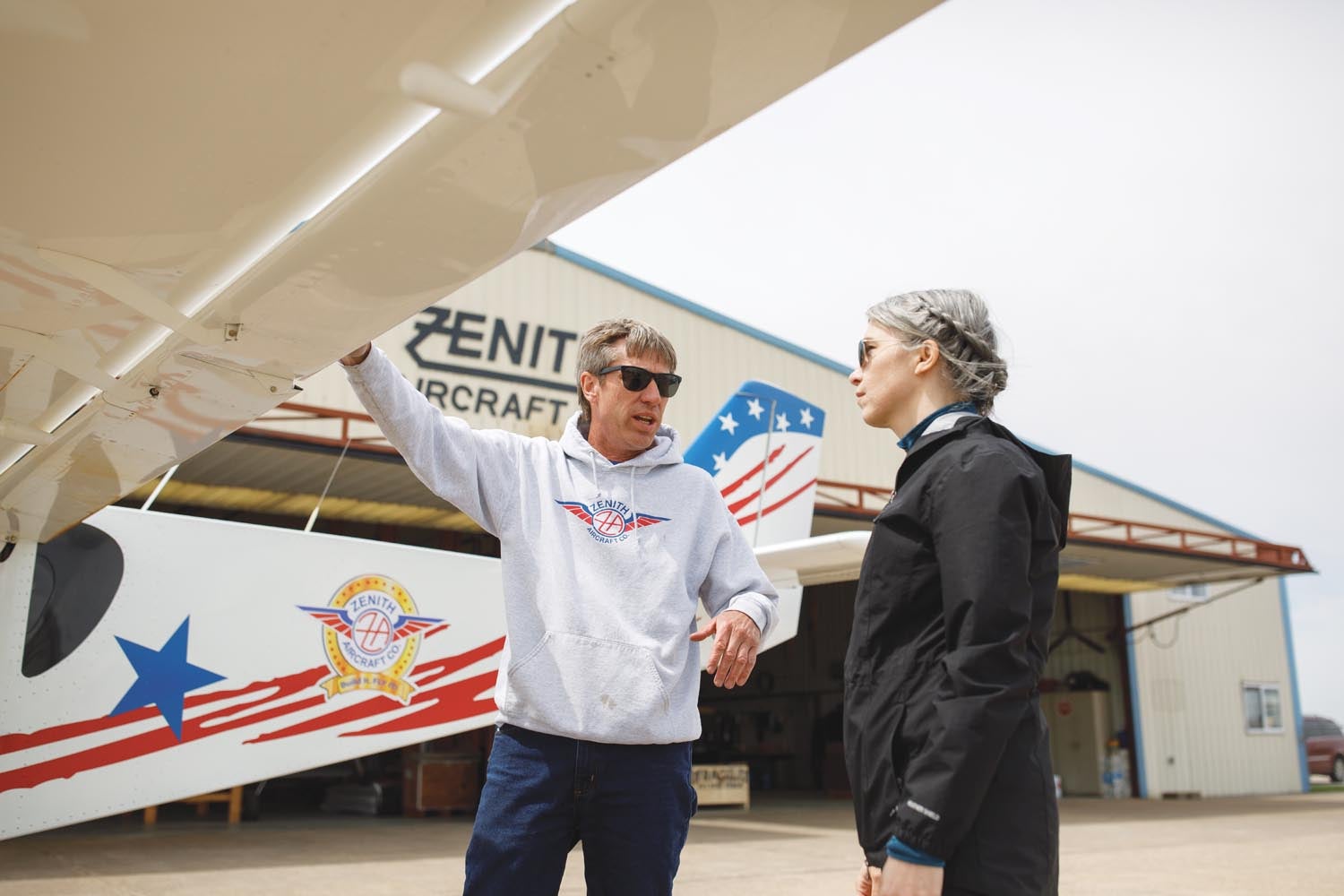
On the Ground
Dubbert walked me through a thorough preflight of the 750, which felt familiar and standard: almost a no-brainer transition from a Cessna, with a few small differences in the airframe. The pitot tube and static ports are connected, as opposed to the static port on the fuselage that I’m used to inspecting. You Piper guys can nod knowingly—just like a Cherokee.
After a brief discussion, we agreed I should climb into the right seat and Dubbert would take the left. He’s more comfortable and familiar with the left seat and, for me, the right seat would be a more familiar transition for a simple reason. The factory CH 750 Cruzer is configured with a center stick with a Y-shaped top, which then forces the throttles out to the left and right edges of the instrument panel. (Don’t go looking for a mixture control. The Cruzer’s ULPower engine is electronically fuel injected, so it takes care of mixture all by itself.) It’s possible to build the Cruzer, like many Zenith models, with optional dual sticks, which seems to be the preferred arrangement in homebuilts; this puts the throttle in the middle and only feels “backward” to the right-seater. Of course, part of the appeal of building would mean placing controls according to my level of comfort and physical needs—not a small item for a petite person used to piling up pillows in cockpits that were never designed for anyone’s comfort.
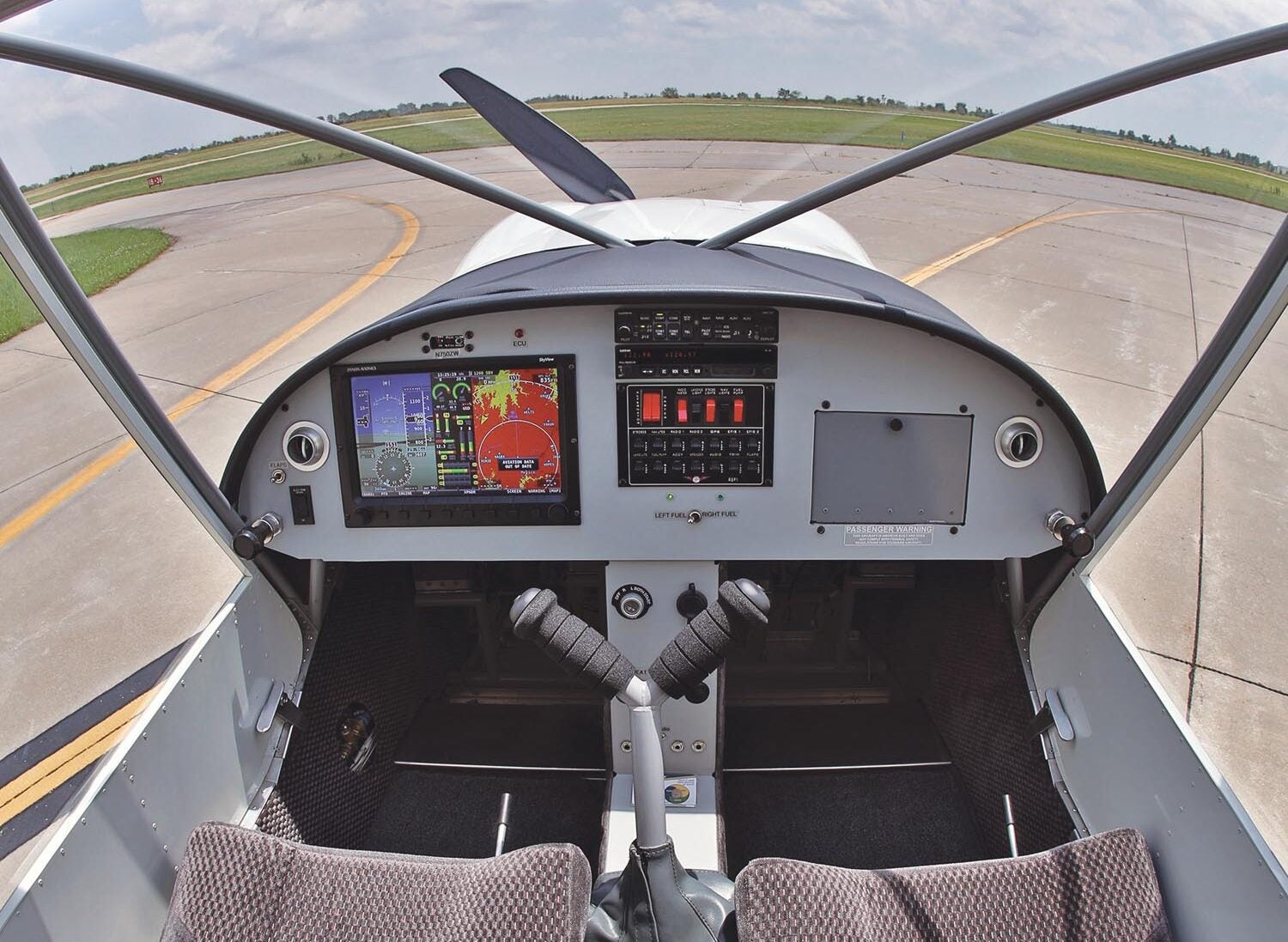
The instrument panel in the CH 750 is a Dynon screen, which was a whole other dimension of newness for me. All of the trainers I have flown still have round dials and I’m accustomed to glancing at airspeed as needed. Dubbert showed me where to look and mentioned that this is a common point for pilots new to Zenith builds. He suggested that someone new to a Zenith model should spend about 10 hours of training to transition—with the significant first few spent in the pattern. If said aviator is coming from the world of “steam” gauges like me, he recommended a few more hours to become familiar and comfortable with how to find the information. Also note that I was looking cross-cabin for airspeed, which would not be the case for the pilot/builder. Anyway, for the purposes of our flight he focused on keeping me looking out the window, listening to the airplane and feeling out what it should be doing.
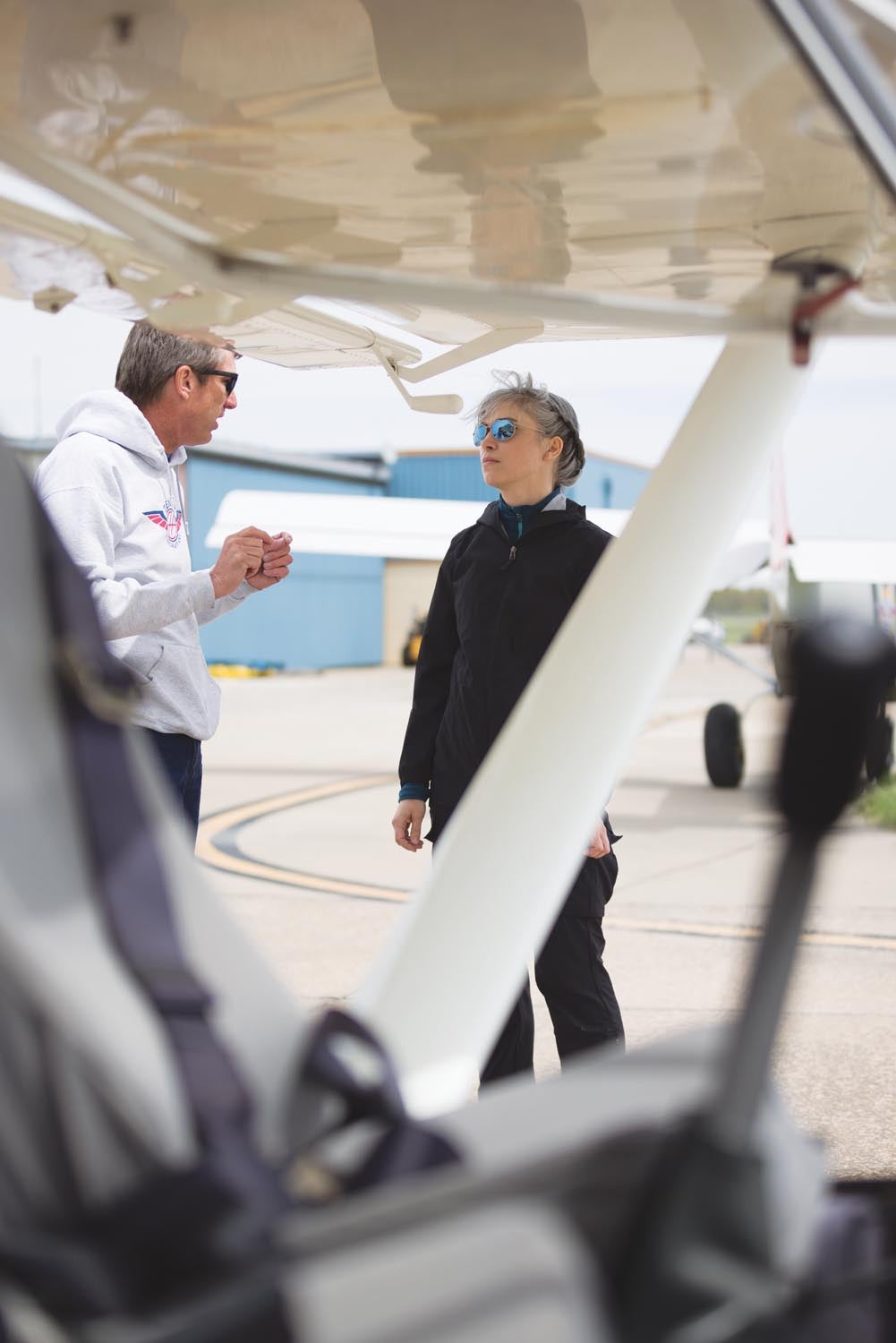 Dubbert passed the controls during taxi so I could feel how it handled on the ground. The bird was very responsive to rudder inputs, unlike the ponderous handling of the 172. I understand that most homebuilts use a free-castering nosewheel—unless they’re taildraggers, of course—and that Zenith is somewhat unusual in having direct nosewheel steering. I’m told it’s more like a Cherokee in its directness than a Cessna, which steers through springs. The Zenith’s brakes, in contrast, required a firm and intentional press far enough up the pedal that the foot position was awkward. It would be tough to accidentally brake during taxi or on landing. I was comforted by that.
Dubbert passed the controls during taxi so I could feel how it handled on the ground. The bird was very responsive to rudder inputs, unlike the ponderous handling of the 172. I understand that most homebuilts use a free-castering nosewheel—unless they’re taildraggers, of course—and that Zenith is somewhat unusual in having direct nosewheel steering. I’m told it’s more like a Cherokee in its directness than a Cessna, which steers through springs. The Zenith’s brakes, in contrast, required a firm and intentional press far enough up the pedal that the foot position was awkward. It would be tough to accidentally brake during taxi or on landing. I was comforted by that.
The run-up involved a quick ignition check at 1600 rpm, followed by noting oil pressure and temperature. There was no vacuum system to worry about, carb heat to check or mixture to adjust. The ULPower UL350i has dual electronic ignitions in addition to the fully automatic electronic fuel injection I mentioned earlier. The induction system is meant to be ice resistant, so no carb heat is needed. Already the Cruzer was simpler to fly than my supposedly simple Cessna 172.
As we rolled onto Runway 18 at Mexico Memorial (KMYJ), Dubbert talked me through takeoff power. This particular item would take some getting used to for any Cessna pilot—and I’m not familiar enough with other Experimentals to know for sure, but I assume pushing the throttle smoothly to the firewall on takeoff is pretty universal. Not so in the 750.
“About half to three-quarters throttle is what you’re looking for,” Dubbert told me. My eyes widened, imagining what would happen if I tried that in a 172. (Um, the end of the runway coming up with the Cessna’s mains still on the ground?) But the 750, with a rotation speed somewhere around 35 mph—also decidedly out of my comfort zone—requires some finesse. Dubbert executed our first takeoff, inviting me to follow him on the controls. He encouraged me to pay attention to the technique, which was similar to a soft-field departure. The rotation felt early but after breaking ground we gently nudged the nose down until we began to climb and babied in the power. Within moments, we were climbing at close to 700 fpm.
Thinking back to not using full throttle: Especially for someone new to the airplane, it makes sense when you think about power and weight. A Cessna 172 weighs as much as 2450 pounds for takeoff with a 180-hp engine. Earlier models with lesser engines are lighter. But the Cruzer has a 118-hp ULPower engine and weighs just 1320 pounds at maximum gross weight, though it’s actually tested for more. You don’t have to do much math to realize the Zenith has far fewer pounds to loft for every available horsepower.
In the Air
We flew out to a suitable maneuvering area, and Dubbert let me take the airplane through a few turns. I immediately understood that the CH 750 would teach a pilot to fly with their fingertips. The airplane is responsive to both aileron and rudder input in the air; you almost don’t need aileron to execute turns. It was a bumpy day, so we opted to return to the airport for a little pattern work instead of spending time over the freshly tilled fields and the hot air bubbling off the surface.
Dubbert again allowed me to follow him on the controls and talked through the process as we neared the end of downwind. GUMPs checklist—which is, ah, just the G—reduce rpm, bring up the nose to reduce airspeed and establish glide. As we turned final, Dubbert brought my attention to the sight picture and his slight adjustments of power and aileron input. The airplane floated peacefully to the 50-foot-wide asphalt strip, and Dubbert held it in ground effect just long enough to kiss the runway when he was ready. The entire landing and rollout was less than 800 feet.
We turned around and Dubbert let me take the stick on takeoff while he managed rudder and power inputs. The moment of liftoff surprised me. “That is very sensitive,” I exclaimed as I applied slight back pressure and we bounded upward.
I handled aileron inputs as we flew the pattern while Dubbert talked me through turns and attitude at each step. He handled rudder and power inputs as we came down on final, letting me adjust to the feel of the airplane in the slight crosswind and work it down to the runway. I made an unintentionally firm landing, not accustomed to the Zenith’s handling in ground effect.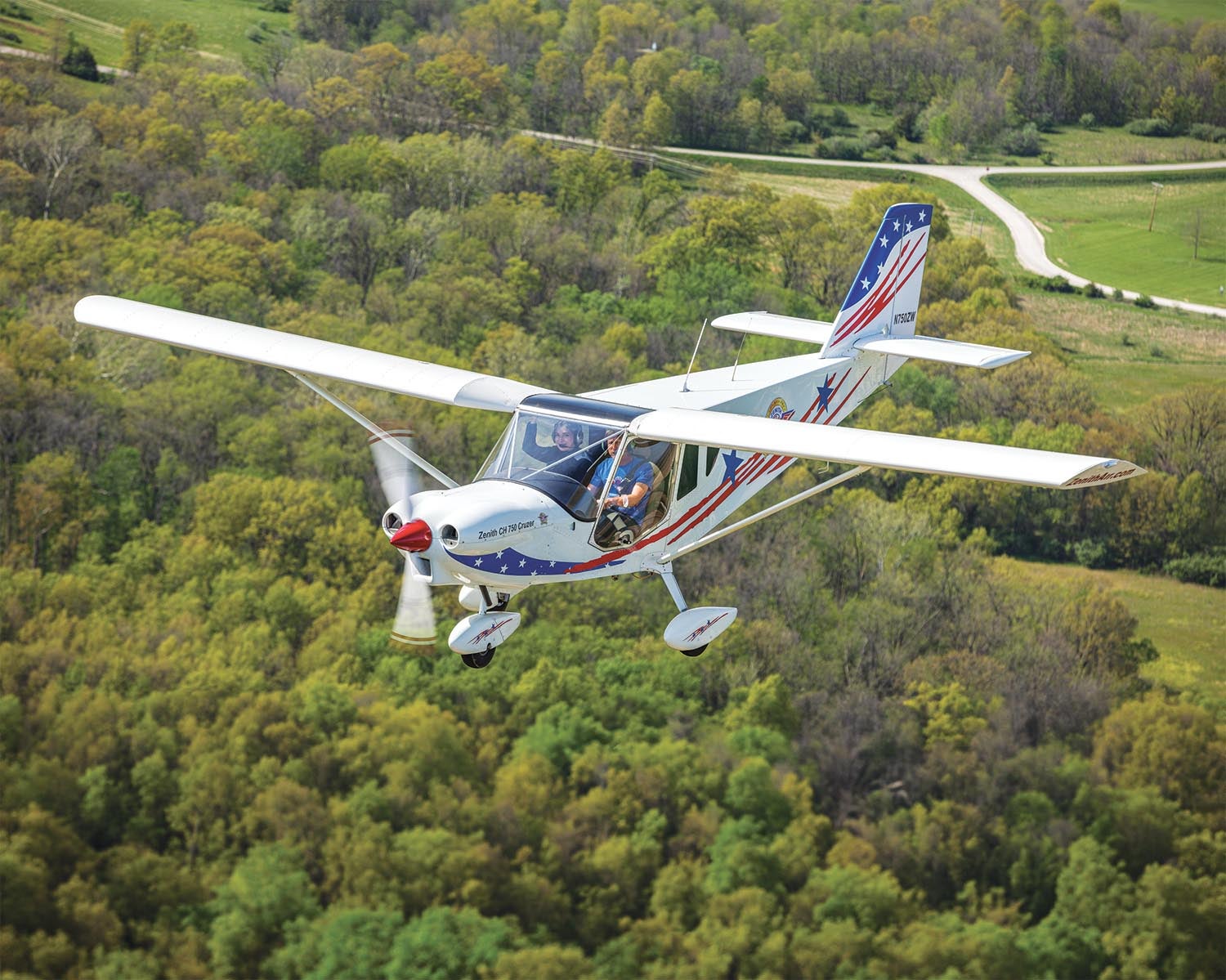
By the third lap, I was gaining confidence and feeling that I could probably get myself safely to Earth if needed. I thought the airplane would be more squirrelly than it actually is. The big adjustments for me were getting used to the light touch and the feeling of flying at lower airspeeds. Again, it all makes sense when you think about the difference in mass, not just the total weight, but where it is in the airplane. For a simple four-seater, the Cessna has a fair bit of mass—more wing, more cabin, pretty much more of everything. It’s also not really optimized for anything, which may be part of the Skyhawk’s enduring charm. It doesn’t do anything fast and has almost no quick reactions. This makes it the perfect trainer and ideal for owners who don’t fly a lot.
The Cruzer has a different mandate. While it is in some ways the “compromise” airplane in the Zenith high-wing lineup—built to sacrifice a bit of STOL performance for a bit more speed—it’s still a light, agile, responsive machine. By design, it reacts to your inputs far more quickly than any 172 could, and that takes a bit of learning on the pilot’s part. I’m told this is not unusual in the homebuilt world. Marc says every time he steps into a Van’s RV, he has to relearn a little finesse that his own GlaStar doesn’t require or even reward.
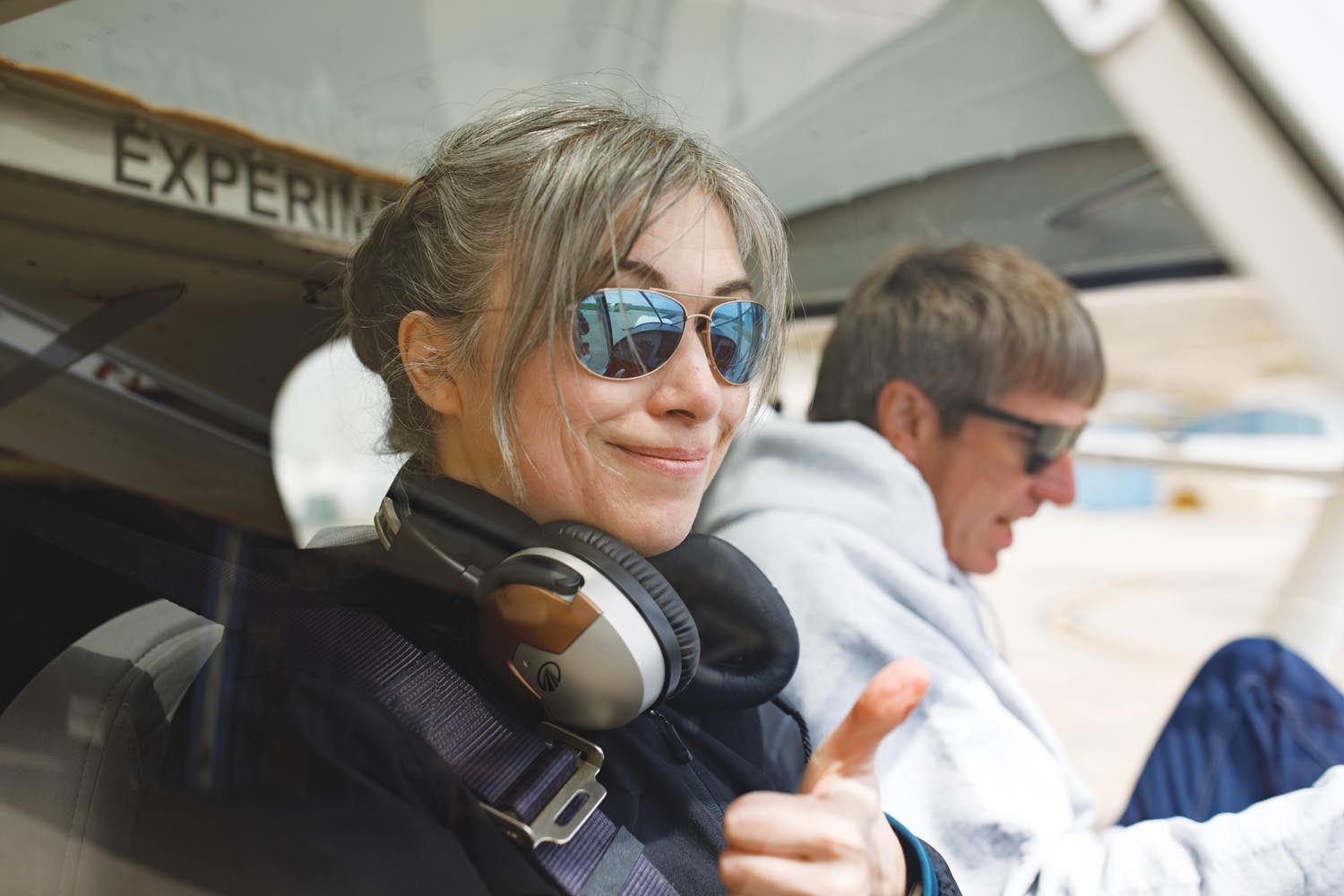
So, What’s the Verdict?
Now that I’ve flown the 750, am I more or less interested in building a Zenith? I certainly feel more confident and comfortable with the idea. I definitely am a fan of reduced task management in the air and in the pattern, with no carb heat or mixture to adjust in addition to managing airspeed, watching for traffic and handling the radio. The fixed nose gear configuration is familiar, and of course the incredible visibility above and below in the airplane imparts some peace of mind.
Between the rudder-building workshop last fall and the chance for a longer demo flight, I think building a Zenith might be a viable option for me. I love the thought of choosing a control system that fits my needs—and my size—as well as choosing avionics and power options for safety and ease of use.
As a low-time pilot, I would certainly take Dubbert’s advice and get several hours of crossover training and experience in the pattern under my belt before any sightseeing or cross-country missions. In the meantime, I can take a lighter touch and smaller inputs back to the 172 with me and hopefully be a better pilot overall.
Photos: Paul Andrews and courtesy of Zenith Aircraft














Very well done and researched story. I have a feeling you may have purchased a kit while visiting! It is a remarkable airplane.
Very fine, well written article. As an old 172 pilot, I could almost feel myself riding along side you in the 750.